-
 Bitcoin
Bitcoin $105,506.7886
5.08% -
 Ethereum
Ethereum $2,448.5436
10.64% -
 Tether USDt
Tether USDt $1.0004
0.00% -
 XRP
XRP $2.1938
10.73% -
 BNB
BNB $641.1726
2.97% -
 Solana
Solana $144.9271
9.87% -
 USDC
USDC $0.9999
-0.01% -
 TRON
TRON $0.2728
1.33% -
 Dogecoin
Dogecoin $0.1647
9.76% -
 Cardano
Cardano $0.5871
9.71% -
 Hyperliquid
Hyperliquid $37.7426
12.64% -
 Sui
Sui $2.7816
14.60% -
 Chainlink
Chainlink $13.5048
16.78% -
 Bitcoin Cash
Bitcoin Cash $450.1369
1.86% -
 UNUS SED LEO
UNUS SED LEO $9.1416
0.96% -
 Stellar
Stellar $0.2478
8.93% -
 Avalanche
Avalanche $18.2644
10.99% -
 Toncoin
Toncoin $2.9149
5.72% -
 Shiba Inu
Shiba Inu $0.0...01172
9.01% -
 Hedera
Hedera $0.1526
13.01% -
 Litecoin
Litecoin $84.6386
5.44% -
 Monero
Monero $315.4266
6.30% -
 Ethena USDe
Ethena USDe $1.0006
0.01% -
 Polkadot
Polkadot $3.4824
10.54% -
 Dai
Dai $1.0000
-0.02% -
 Bitget Token
Bitget Token $4.2707
5.83% -
 Uniswap
Uniswap $7.0582
15.65% -
 Pepe
Pepe $0.0...01003
13.82% -
 Pi
Pi $0.5454
9.30% -
 Aave
Aave $263.4696
17.20%
Is it a risk or an opportunity for the RSI indicator to continue to trade sideways at a high level after breaking through 70?
When RSI stalls above 70 in crypto, it may signal either strong momentum or an impending pullback—always confirm with price action and volume before making a move.
Jun 24, 2025 at 11:15 am
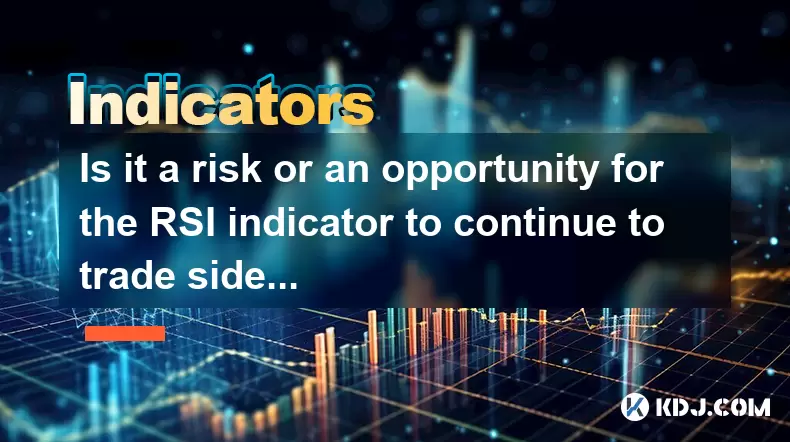
Understanding the RSI Indicator in Cryptocurrency Trading
The Relative Strength Index (RSI) is a momentum oscillator widely used by cryptocurrency traders to evaluate overbought or oversold conditions. Typically, RSI values range from 0 to 100, with readings above 70 indicating overbought territory and those below 30 signaling oversold conditions. However, in volatile crypto markets, RSI can behave unpredictably, especially when it breaks through 70 and continues trading sideways at high levels for an extended period.
This phenomenon raises critical questions among traders: Is this sideways movement after breaking 70 a risk or an opportunity? To answer this, we need to analyze how RSI functions within the context of cryptocurrency price action and market psychology.
Tip: Always consider RSI in conjunction with other technical indicators like moving averages or volume to avoid false signals.
What Does It Mean When RSI Breaks 70 and Stalls?
When RSI crosses above 70 and remains elevated, it suggests that buying pressure has been strong enough to push prices upward. However, if it doesn't continue rising but instead trades sideways, it may indicate a pause or consolidation phase rather than a reversal.
In cryptocurrency markets, such behavior can occur during bull runs where buyers keep pushing prices despite overbought readings. This often reflects strong investor confidence and sustained demand for a particular asset. In contrast, in weaker uptrends, this could signal exhaustion among buyers and the potential for a pullback.
Important: A stalled RSI above 70 should not be interpreted as an automatic sell signal without further confirmation from price action or volume data.
Identifying Risks in Extended High-Level RSI Readings
One major risk associated with RSI remaining above 70 for prolonged periods is the possibility of a sudden reversal. If the price fails to make new highs while RSI stays elevated, a bearish divergence may form, suggesting weakening momentum.
Another risk lies in trader psychology—many retail investors may interpret overbought conditions as a sign to take profits, which can trigger selling cascades even in otherwise bullish environments.
- Monitor candlestick patterns for signs of rejection at resistance levels.
- Watch for volume spikes on downward candles, which might signal increased selling pressure.
- Use trendlines to identify potential breakdown points in the current price structure.
Opportunities Presented by Stable High-Level RSI Conditions
Conversely, a stable RSI above 70 can also present opportunities, particularly in trending markets. If the price continues to move higher or consolidates in a tight range, this may reflect healthy accumulation by institutional players or whales who are not deterred by traditional overbought levels.
Traders can use this scenario to enter long positions after confirming support levels or breakout patterns. In such cases, the RSI’s sideways movement indicates equilibrium between buyers and sellers, rather than a clear reversal signal.
- Look for retests of key support levels as entry points.
- Combine RSI with Bollinger Bands to gauge volatility compression before potential breakouts.
- Analyze order book depth to determine whether large buy walls are forming near current prices.
How to Differentiate Between Risk and Opportunity Using RSI Behavior
To distinguish whether a high-level RSI stall is risky or opportunistic, traders must examine several factors:
- Price structure: Is the price still making higher highs and higher lows?
- Volume profile: Is volume increasing on up days or declining?
- Market sentiment: Are there macro-level developments influencing investor behavior?
If the price continues to rise alongside stable volume and positive news flow, the RSI hovering around 70 may indicate strength rather than weakness.
However, if volume declines significantly and price begins to show indecision or failure at resistance, then the sideways RSI may serve as an early warning sign.
- Check weekly and daily charts to assess overall trend integrity.
- Compare RSI across multiple timeframes to filter out noise and spot divergences more clearly.
- Use Fibonacci retracement levels to anticipate potential pullback zones.
Frequently Asked Questions
Can RSI stay above 70 indefinitely in crypto markets?
Yes, in strong bull trends, especially in altcoins or during parabolic moves, RSI can remain above 70 for days or even weeks. This is common during periods of extreme speculation or FOMO-driven rallies.
Should I short a cryptocurrency just because RSI is above 70?
No, RSI alone should not be the basis for entering a short trade. Wait for additional confirmation such as bearish candlestick patterns, volume surges to the downside, or bearish divergences before considering shorting.
What other indicators work well with RSI when analyzing sideways movement above 70?
Traders often combine RSI with MACD, volume profiles, and moving averages to get a clearer picture. These tools help confirm whether momentum is still bullish or starting to wane.
Is RSI more reliable on higher timeframes like daily or weekly charts?
Generally, yes. Higher timeframes tend to filter out market noise, making RSI signals more reliable. For example, a stalled RSI on the daily chart carries more weight than one observed on a 1-hour chart.
Disclaimer:info@kdj.com
The information provided is not trading advice. kdj.com does not assume any responsibility for any investments made based on the information provided in this article. Cryptocurrencies are highly volatile and it is highly recommended that you invest with caution after thorough research!
If you believe that the content used on this website infringes your copyright, please contact us immediately (info@kdj.com) and we will delete it promptly.
- BlockDAG's Bold Move: A $100 Million Token Airdrop Fuels Ecosystem Growth
- 2025-06-25 00:45:12
- Aero Crypto (AERO): 100x Altcoin or Just Jumped 14%? Decoding the Hype
- 2025-06-25 00:25:12
- Banish Flies with a Coin Trick? The Buzz Around This Bizarre Hack
- 2025-06-25 00:45:12
- Bitcoin, Mortgages, and Finance: A New Era?
- 2025-06-25 00:25:12
- Mastercard, Fiserv, and Stablecoins: A New Era of Payments?
- 2025-06-25 00:55:12
- Circle Stock, Stablecoin Competition, and Wall Street: A New York Minute
- 2025-06-25 00:55:12
Related knowledge

What does it mean that the ATR indicator suddenly doubles after hitting a new low this year?
Jun 24,2025 at 11:57pm
Understanding the ATR IndicatorThe Average True Range (ATR) is a technical analysis indicator used to measure market volatility. Developed by J. Welles Wilder, ATR calculates the average price range between a security’s high and low over a specific period—typically 14 periods. It does not indicate the direction of price movement but rather how volatile ...
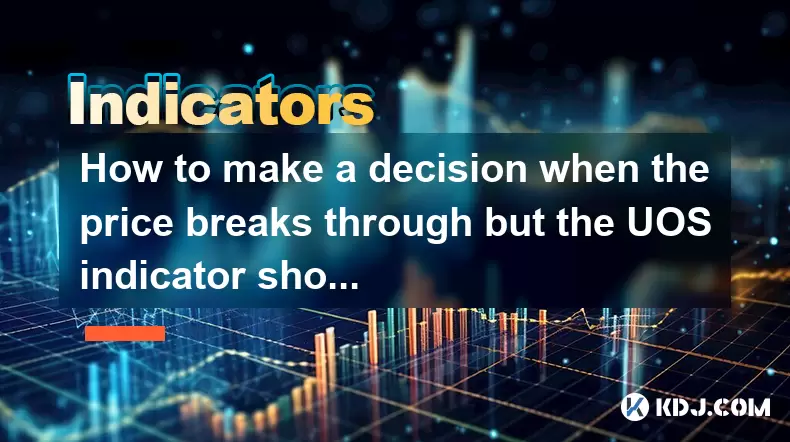
How to make a decision when the price breaks through but the UOS indicator shows a top divergence?
Jun 24,2025 at 11:42pm
Understanding the UOS Indicator and Price BreakthroughsThe Ultimate Oscillator (UOS) is a momentum oscillator that combines multiple timeframes to provide a more accurate picture of market momentum. When traders observe a price breakthrough — where the price moves above a key resistance level — but the UOS indicator shows a top divergence, it creates a ...

How to judge that the price breaks through the cloud but the hysteresis line has not turned?
Jun 24,2025 at 10:43pm
Understanding the Ichimoku Cloud and Its ComponentsIn technical analysis, the Ichimoku Cloud, also known as the Ichimoku Kinko Hyo, is a powerful tool used by traders to gauge momentum, trend direction, and potential support or resistance levels. The cloud itself is composed of multiple lines: Tenkan-sen (conversion line), Kijun-sen (base line), Senkou ...
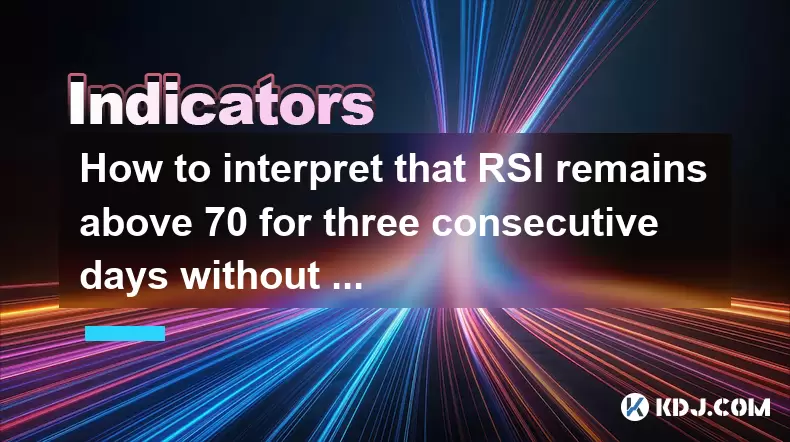
How to interpret that RSI remains above 70 for three consecutive days without falling back?
Jun 24,2025 at 11:14pm
Understanding the RSI Indicator in Cryptocurrency TradingThe Relative Strength Index (RSI) is a momentum oscillator used to measure the speed and change of price movements. Typically, it ranges from 0 to 100 and is widely used by traders to identify overbought or oversold conditions in an asset. In cryptocurrency trading, where volatility is high and tr...
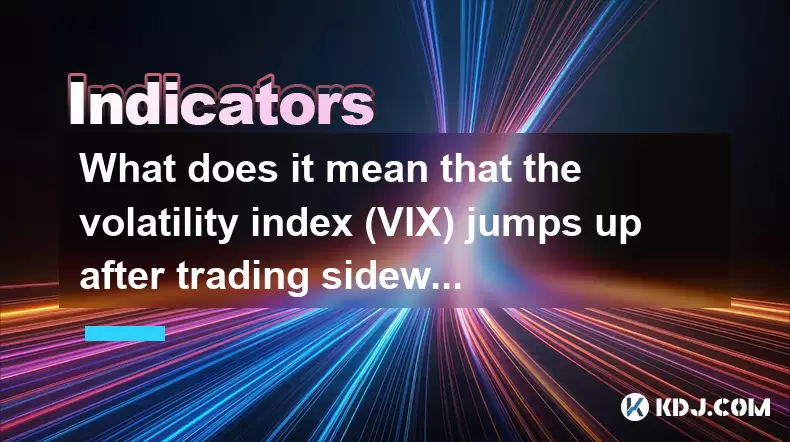
What does it mean that the volatility index (VIX) jumps up after trading sideways at a low level?
Jun 24,2025 at 09:35pm
Understanding the Volatility Index (VIX)The Volatility Index (VIX), often referred to as the 'fear gauge,' is a real-time market index that represents the market's expectation of 30-day forward-looking volatility. It is calculated by the Chicago Board Options Exchange (CBOE) based on the price inputs of S&P 500 index options. In the context of cryptocur...
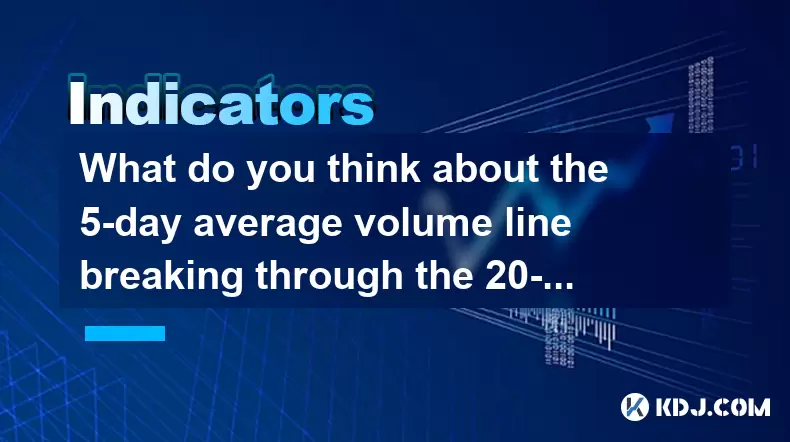
What do you think about the 5-day average volume line breaking through the 20-day average volume line but the price is stagnant?
Jun 24,2025 at 11:50pm
Understanding Volume Indicators in Cryptocurrency TradingIn cryptocurrency trading, volume is one of the most crucial indicators that traders rely on to gauge market sentiment and potential price movements. Volume represents the total number of assets traded over a specific period, and when analyzed using moving averages like the 5-day and 20-day volume...

What does it mean that the ATR indicator suddenly doubles after hitting a new low this year?
Jun 24,2025 at 11:57pm
Understanding the ATR IndicatorThe Average True Range (ATR) is a technical analysis indicator used to measure market volatility. Developed by J. Welles Wilder, ATR calculates the average price range between a security’s high and low over a specific period—typically 14 periods. It does not indicate the direction of price movement but rather how volatile ...

How to make a decision when the price breaks through but the UOS indicator shows a top divergence?
Jun 24,2025 at 11:42pm
Understanding the UOS Indicator and Price BreakthroughsThe Ultimate Oscillator (UOS) is a momentum oscillator that combines multiple timeframes to provide a more accurate picture of market momentum. When traders observe a price breakthrough — where the price moves above a key resistance level — but the UOS indicator shows a top divergence, it creates a ...

How to judge that the price breaks through the cloud but the hysteresis line has not turned?
Jun 24,2025 at 10:43pm
Understanding the Ichimoku Cloud and Its ComponentsIn technical analysis, the Ichimoku Cloud, also known as the Ichimoku Kinko Hyo, is a powerful tool used by traders to gauge momentum, trend direction, and potential support or resistance levels. The cloud itself is composed of multiple lines: Tenkan-sen (conversion line), Kijun-sen (base line), Senkou ...

How to interpret that RSI remains above 70 for three consecutive days without falling back?
Jun 24,2025 at 11:14pm
Understanding the RSI Indicator in Cryptocurrency TradingThe Relative Strength Index (RSI) is a momentum oscillator used to measure the speed and change of price movements. Typically, it ranges from 0 to 100 and is widely used by traders to identify overbought or oversold conditions in an asset. In cryptocurrency trading, where volatility is high and tr...

What does it mean that the volatility index (VIX) jumps up after trading sideways at a low level?
Jun 24,2025 at 09:35pm
Understanding the Volatility Index (VIX)The Volatility Index (VIX), often referred to as the 'fear gauge,' is a real-time market index that represents the market's expectation of 30-day forward-looking volatility. It is calculated by the Chicago Board Options Exchange (CBOE) based on the price inputs of S&P 500 index options. In the context of cryptocur...

What do you think about the 5-day average volume line breaking through the 20-day average volume line but the price is stagnant?
Jun 24,2025 at 11:50pm
Understanding Volume Indicators in Cryptocurrency TradingIn cryptocurrency trading, volume is one of the most crucial indicators that traders rely on to gauge market sentiment and potential price movements. Volume represents the total number of assets traded over a specific period, and when analyzed using moving averages like the 5-day and 20-day volume...
See all articles
























































































